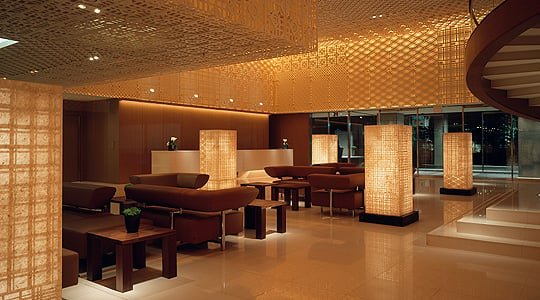
Tokyo might be the pulsing heart of modern Japan but, if you want to experience the country’s soul, you need to visit the former Imperial city of Kyoto. Aside from the countless temples and shrines – 14 of which are official UNESCO world heritage sites – Kyoto offers many young designer stores and a vibrant nightlife. The city’s characteristic fusion of tradition and modernism is also reflected in the Hyatt Regency Kyoto, probably the best luxury hotel in the region.
It’s said that there are three cosmopolitan cities you need to visit at least once in your life: Paris, Rome and Kyoto. For more than a millennium, from 794 to 1860, Kyoto was the country’s Imperial city and therefore the cultural and political capital of Japan. Later, the court moved to Edo, today’s Tokyo, but the architectural and cultural legacy remained. In fact, nowhere else in Japan can you find as many temples and shrines than in the UNSECO-approved region of historical Kyoto. Only minutes away from some of the most impressive temples, located in the district of Higashiyama Shichijo, the Hyatt Regency Hotel opened its doors in the spring of 2006.
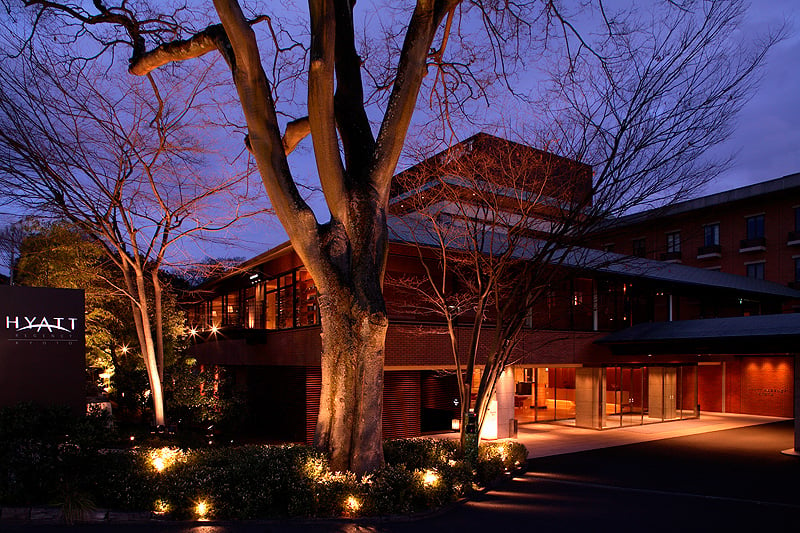
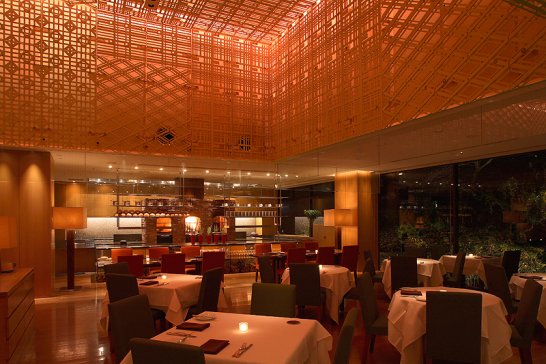
The hotel was designed by Takashi Sugimoto from Super Potato, a well-known interior design firm in Japan. To reflect the heritage of the place, Sugimoto chose to blend traditional Japanese materials and designs with contemporary Japanese style. As soon as you step into the lobby, your attention is caught by the impressive, rather minimalistic fretwork of the ceiling that uses historically inspired patterns to evoke memories of different periods and regions. The 189 guest rooms also combine traditional and contemporary Japanese aesthetics: warm and simple white oak walls, along with headboards featuring old kimono fabrics, contrast with ultramodern LCD television sets or the Braun alarm clock designed by Dieter Rams.
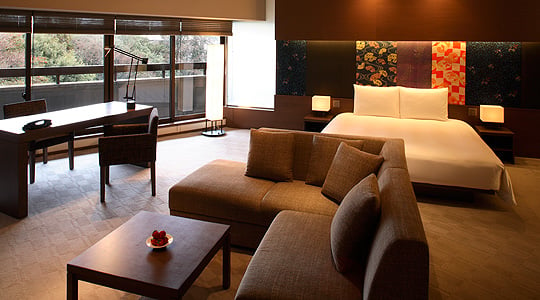
The Regency Executive Suites on the ground floor give a splendid view over the garden. Depending on the season, you can spend hours watching the cherry blossoms or autumn leaves from your bed. With tatami floors, sunken kotatsu tables and large wooden bathtubs, the suites offer an authentic Japanese living experience without forgoing the comforts western travellers expect.
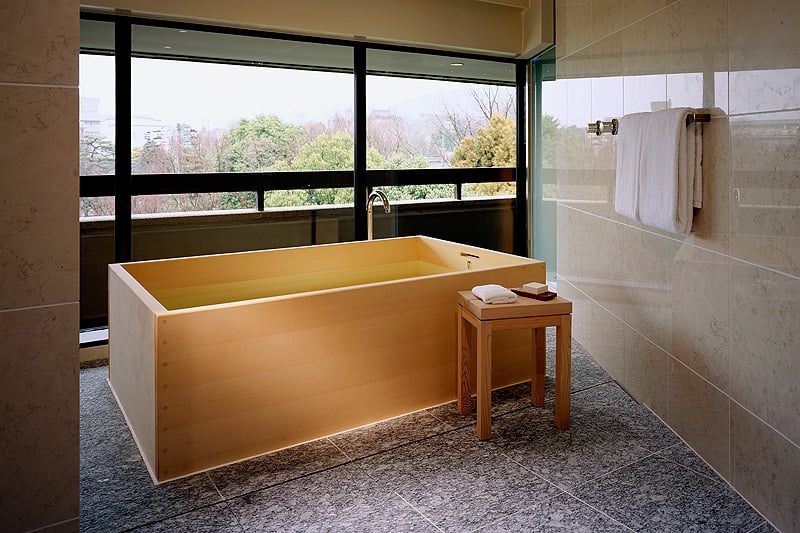
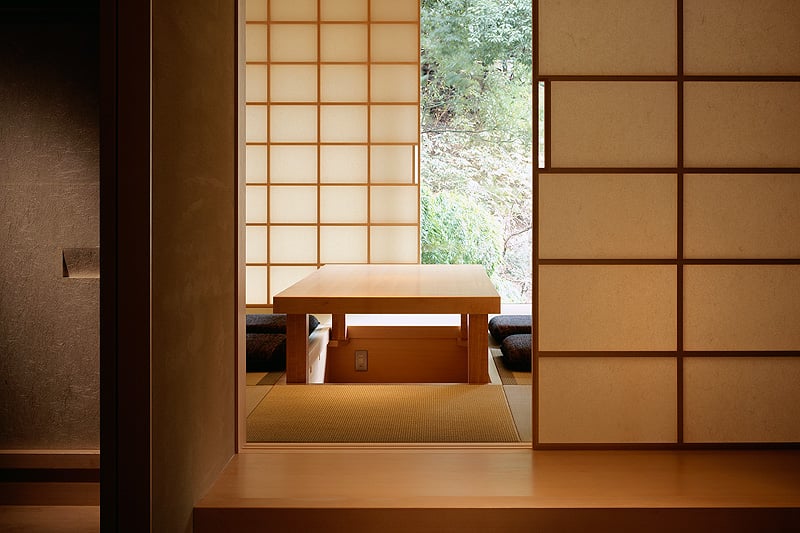
For those too tired to walk to the Gion district for a traditional Kyoto dinner, the Hyatt Regency also houses several highly recommendable restaurants. The Touzan is modelled on a traditional Kyoto home and offers a Charcoal Sumiyaki Grill as well as a Sushi bar serving fresh seafood. If you want a break from Japanese cuisine, there’s also the French ‘Le Grill’ – or the ‘Trattoria Sette’, where authentic Italian food is served. If you are visiting Kyoto at the right time, you might be able to experience an exclusive ‘Geiko and Maiko’ dinner, where a real Geisha (called Geiko in Kyoto) and her young trainees (called Maikos) entertain a small circle of guests with singing, dancing and games. For an after-dinner drink, you might choose the Touzan Bar, where the Super Potato designers have artfully arranged hunderds of books.
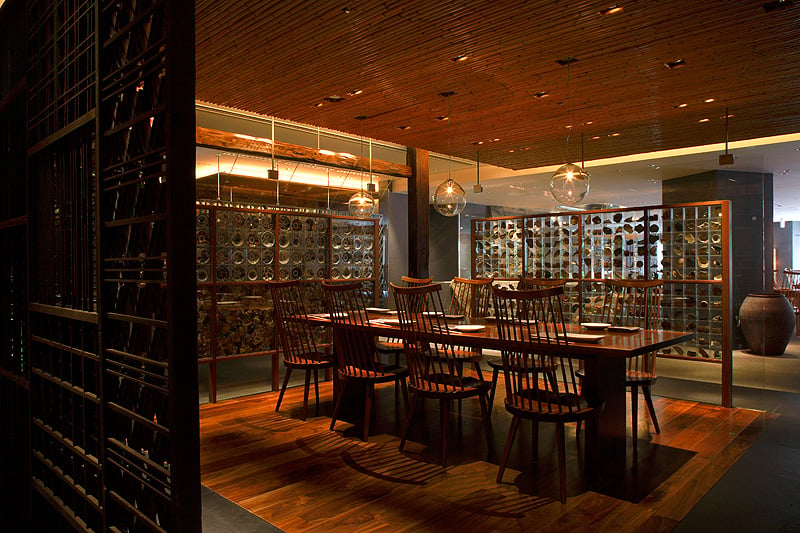
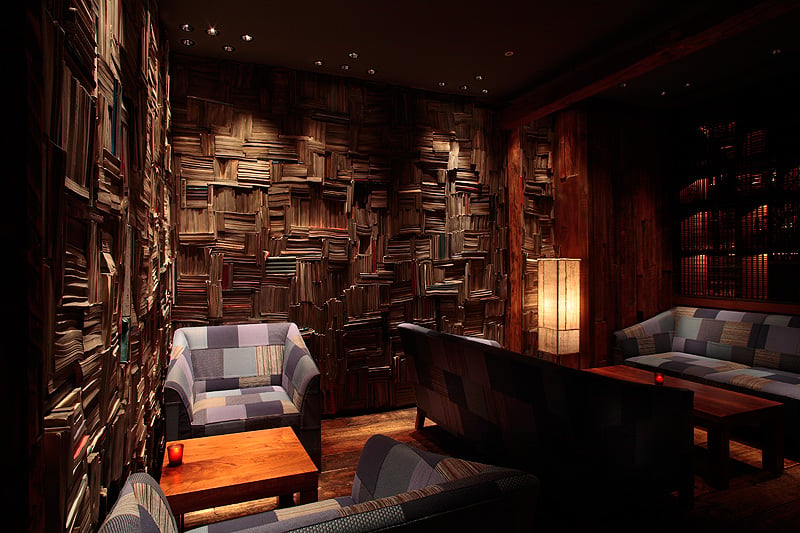
In the morning, before touring the temples, we recommend a visit to the Riraku, the Hyatt Regency’s health spa, where you can choose from various aromatherapies, body massage treatments and acupuncture packages. After a couple of hours in the Riraku, you will leap up the steps to Kiyomizu-dera temple like a young deer.
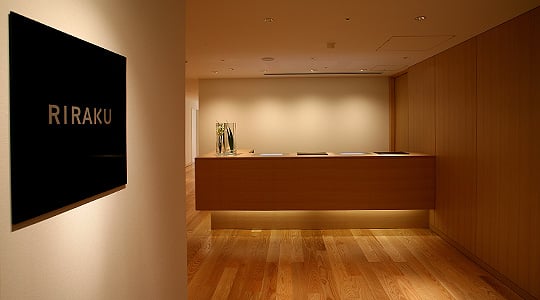
Spring and autumn are the most popular seasons to visit Kyoto. But there are many attractions in winter, too, such as the Arishiyama Hanatouro festival in December, the Hatsumode or New Year’s Eve in January, and the Setsubun festival in February. From 7 December to 18 March, the Hyatt Regency Kyoto offers its guests a ‘Fourth Night Free’ – stay for four nights and only pay for three. Details can be found on the hotel’s website, www.kyoto.regency.hyatt.com.
Text: Jan Baedeker
Photos: Hyatt Regency Kyoto
ClassicInside - The Classic Driver Newsletter
Free Subscription!









